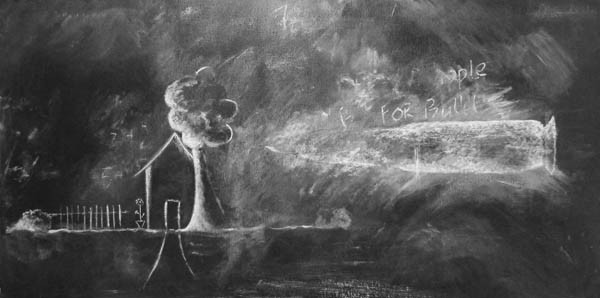

It’s interesting that the Urdu word for medicine (that is supposed to save lives), goli, is also one that describes something that takes life. Perhaps the connection comes from the shape itself -- both drug and bullet both being round.
In the past few years, the society has seen an increase in violence on multiple levels. This culture of violence has generated a sense of immunity and expectedness. Reports about scores killed in Karachi, Quetta, Peshawar or elsewhere do not shock us anymore. Similarly, weapons that were once captured from criminals are now managed with ease and often proudly displayed.
Yet these metallic products contain the possibility of annihilation. Feared by millions, these still denote danger. They also signify the shift in society -- from the discourse of debate, argument and persuasion to the language of power. These small items operated with familiarity serve as alphabets in a vocabulary of force where you risk losing your life if you lose your point.
Like everyone else, artists too have been reflecting on the situation in society, more so because many of them (including Amin Gulgee, Munawar Ali Syed, Akram Dost Baloch and Nausheen Saeed) have suffered the loss of their dear ones in different acts of brutality in recent years. Many have encountered other forms of atrocities and crimes as their mobiles, wallets, vehicles and other valuable possessions have been snatched on gunpoint by armed men (a list of victims of these robberies would be a complete inventory of artists in Pakistan, since almost everyone has suffered on one or another occasion!).
Recognising the threat of violence, Koel Gallery in Karachi organised an exhibition ‘Aihad Karo’ (from Nov 29-Dec 8, 2013) where artists respond to this problem in different manners. Curated by Meher Afroz, the show "involves works by 52 artists who were each given a canvas screen printed with the image of a bullet. The challenge to the artists was to manipulate, employ or skew the image in any way they desired to visually express their protest against violence".
What the invitation card describes is precisely followed by the participants, because each artist has worked on an identical canvas and has tried to change the existing image by adding something else on the surface. This exercise must have been an interesting as well as frustrating endeavour since each individual was aiming for a paradoxical product. Keeping the initial visual of bullet intact, they sought to transform it in such a scheme that their work would be different from other entries and reveals their individual style, thought and creativity.
Artists invited to this exhibition have dealt with the challenge in diverse methods. Some of them have not altered the shape or appearance of bullet and have built their imagery around this dominating form which due to the proportion of its scale to surface seems more like a missile rather than a small bullet. They have clearly and carefully avoided ‘handling’ the dangerous item, and prefer filling the rest of space with images and colours. This strategy in some cases has modified the meaning and context of the original object; in a few works it seems like a decorative device.
A number of artists have opted to change the shape of bullets by introducing various solutions. From turning bullet into central part of a spinning top (Anum Jamal) to an entrance arch in the mausoleum of Quaid-e-Azam (Mohan Das), section of a children’s toy (Mahreen Zuberi) and making it a letter with other calligraphic strokes (Athar Ali Hafeez), the intention of subversion is evident and convincing.
Some artists choose an indirect way of diffusing the deadly subject by inserting a completely irrelevant or humorous element. For instance, Rabeya Jalil has turned the bullet into a large scale metal utensil next to others pieces, all under the drops coming out of Muslim shower; or a chalk drawing on a blackboard in the work of Agha Jan.
Apart from these excursions in exhilarations, two artists have approached the theme in a sophisticated, although completely opposite, fashion. Muhammad Zeeshan, in place of destroying or defacing the power of bullet, puts layers of glass on top of the canvas which has diffused the threatening object and turns it into a soft geometric form. A transition achieved with minimal intervention has produced a deeper impact.
Similarly, Irfan Hassan has transformed the basic shape of the bullet into a pattern from the prayer rug. The central outline of bullet extends to become the design of an arch on top of this piece of fabric traditionally used for worship. Thus, Hassan not only protests the spread of violence in society but also reminds the relationship between terror and religious fanaticism; a truth which is difficult to utter but needs to be acknowledged and asserted.